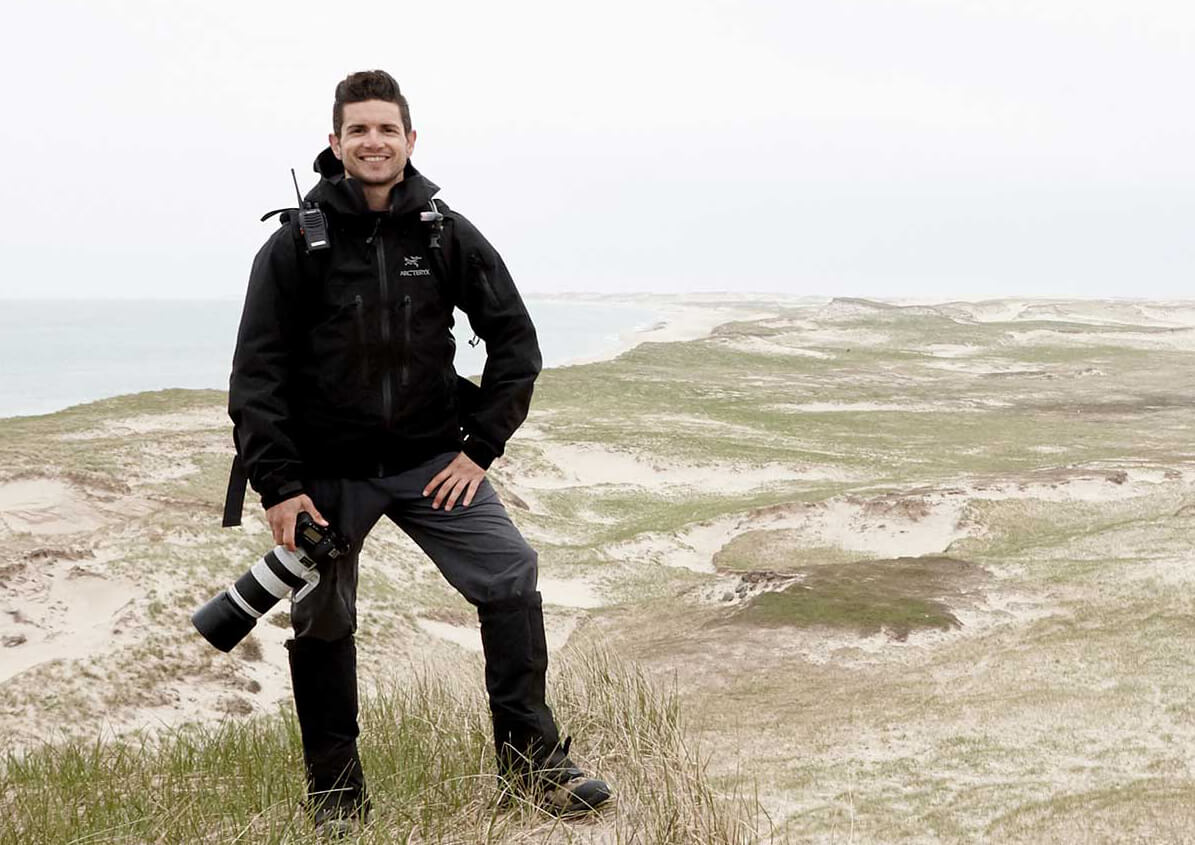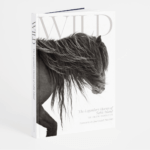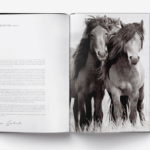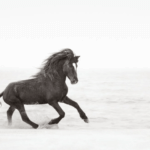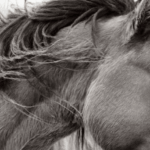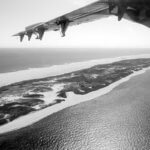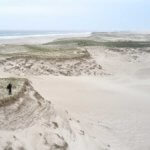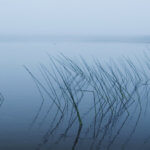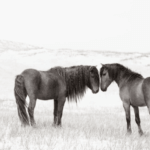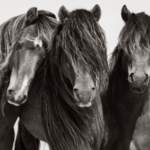I recently had the privilege of reviewing this beautiful new book. It’s stunning, breathtaking and will be a treasured coffee-table book. Let me take you through an interesting interview, a behind-the-scenes look at how this book came to be.
Karen Pickering, Publisher, The Northwest Horse Source.
NWHS: What inspired you to do this project?
Drew: I’ve been fortunate to travel a lot of places around the world, and many remote places. One of the things that kept drawing me back to Sable Island is the fact it’s one of the last remaining frontiers of true wildness. I feel it’s such an extraordinary story of survival, mystery, and intrigue. There’s so much mystery surrounding these horses, where they came from and how they got there and how they’ve adapted and survived over these last several centuries that instantly I was hooked. I gravitated toward wanting to explore this remarkable relationship between these animals and their past with this island. I really couldn’t peel myself away from the story after diving in and experiencing it myself. It just keeps calling me back. It took as long as it did because of the environment where the horses live.It’s simple in some ways, but complex in others so I wanted to be able to portrait the depth of the relationship, which is seemingly inhospitable to humans, and how the horses have adapted and thrived in this environment. I also wanted to be able to learn from each trip and with the perspective of time to create a well-rounded body of work about the horses.
NWHS: Why did it take over 8 years to complete this project?
Drew: I just couldn’t pull myself away. I wasn’t waiting for one particular perspective to be able to complete the picture. Being granted access to visit Sable Island was difficult and being able to stay overnight even more difficult. I worked for over a year alone to be able to get a drone in to be able to photograph these animals from the air because that was one perspective that hadn’t been done before in fine art photography. And one that was really important in telling the story of these animals and seeing the landscape. When you’re walking on Sable and experiencing first-hand you only get part of the picture because you can’t see over that dune. It feels like a Martian landscape, and you get that, but seeing it from above you really get that topography and how small the island is. Being able to photograph these horses and their relationship with the island in multiple perspectives to capture their wildness and get their spirit to really come through in the images, is something that takes time and patience, because, as a visitor to the island, I can certainly study and anticipate their movements, but I can’t interfere with them. Having the patience to be able to get the images that speak to their essence was something that took, not one or two trips, but multiple over the years.
NWHS: Had you been around horses before this?
Drew: I had, yeah, I grew up casually riding horses, but I never competed. I always had this great affinity, respect, and appreciation for horses. When I began my fine art career and left fashion behind, I knew I wanted to focus on other subjects. I began searching for stories of extraordinary survival, and that was one of the reasons I was hooked on photographing Sable Island. I was just captivated by these animals’ existence in this place, this tiny speck of sand in the middle of the North Atlantic.
NWHS: Where did the horses come from?
Drew: There is a bit of debate on the topic but many of the horses are believed to be descendants of the horses that were brought over during one of the colonization attempts of the island. As you may know, these colonization attempts failed and the people either died or left and the horses survived. There also have been many shipwrecks on the island, over 350, and it’s possible that some of these horses are survivors of those shipwrecks. I think it’s become more widely accepted that their origins are tied to the colonization attempts.
NWHS: When you first visited the island, what was your first impression?
Drew: I remember the first time I was flying to the island. You have built up in your mind what it’s going to be like, and what it’s going to look like, and I remember looking out the plane window and seeing you are in the midst of this vast ocean, this tiny, crescent shaped spit of sand. Literally there’s nothing else, just sand. There are no trees, no rocks and just being in awe of life in this almost forgotten paradise, like time just doesn’t exist. Sable Island exists out of time. Being able to set foot on the shores felt like an absolute blessing to be one of the few people that have been able to experience Sable Island. It’s also a very humbling experience because you feel small in the grand scheme of things. You’re in the middle of this vast ocean on this little island and the silence is almost deafening in a way. You get to develop this beautiful relationship with the animals on the island, but you’re merely an observer. It’s a humbling experience and I remember quite vividly those first days on the island were transformative in many ways.
NWHS: When you started this project was it what you envisioned?
Drew: It is. It is even better, honestly, because I was granted the ability to photograph the island from the air. That perspective was novel and gave me an even more well-rounded body of work than I had initially imagined the ability to create. This is because when you’re at a certain altitude in the plane you don’t feel like you’re there with the horses, as you’re not over the shoulder capturing their movements. So, I think the drone perspective was really the cherry on top for me being able to complete my documentation of the horses. All along I’ve tried to create a body of work that was true to their wildness, to that spirit that captivated me initially when I was first researching this island. I think it captivates a lot of people who fantasize about this last remaining place of true wildness. Mother nature is still queen.
NWHS: Did you name any of the horses?
Drew: I did. I only named a few. The one that comes to mind is one I call Legend. He’s a bay stallion that has a blonde mane that literally is so long it sweeps down and touches the ground. I encountered Legend on the very first trip to Sable Island. I spent almost an entire day just photographing and following him because he was so active and energetic. He didn’t have a family at this point, but he was destined to, as there was just so much energy, wildness and so much spirit about him. When I came back the next time, I spent days looking for him and couldn’t find him. My last day on the island I found him on the opposite end of the island, the western spit, and he had a family. He had this young foal that was so rowdy, so rambunctious, and you could tell his spirit had been passed on. It was giving him great grief trying to keep him in line. I got a good chuckle to myself as I got to see the relationship play out over the course of a couple of different trips. There was one other horse on the island, a foal, that in my second trip there was named Emerson by the researchers on the island after my newborn daughter. I have a few images near the end of the book of Emerson.
NWHS: Did you run into any hardships?
Drew: Yes, photographing on Sable Island, for me, is a dream in many ways but it’s also extraordinarily challenging. The challenges start long before you even get to the island, with arranging for permissions, like I mentioned, it could take months to years to get adequate overnight preparation. Even getting to the island within the window of your permit requires a good deal of luck as well because the weather is so difficult. The island is shrouded by fog 150 plus days a year. So, finding a window to thread the needle and get in is difficult. There are no landing strips, you land on the beach so it’s all visual flight. There’s no runway or instruments you can really use. It’s an exhausting experience just trying to get to the island. It’s taxing in that when you land you feel like you’ve won the lottery but getting to that point is emotionally draining. On the island the means of getting photographs is using your own two legs, walking from one end of the island to the other. They’re usually 12- or 13-hour days from sunrise to sunset, you’re usually soaked to the bone, your boots don’t dry by day two or three, and every step you take is in loose sand. It is an extraordinarily physically taxing experience, but one that you couple with a sense of adventure with moments of being able to sit amongst the horses and soak in the majesty of this place. It’s just incredibly rewarding.
NWHS: Did you stay overnight? Where did you stay?
Drew: Yes. All my trips were usually from a week to two and a half weeks at a time. There’s a weather station on the island that is run by the Canadian Coast Guard. There are about two to three weather scientists that are on the island manning it in 3-month shifts. There’s also one or two staff keeping the weather station operable. There are quarters that you can stay in that are used by researchers like for the seals, or the Arctic Tern colonies , or the horses. While there aren’t very many guests that come in and out on an overnight basis, there will be a steady flow of researchers in and out because Sable Island really is this remarkable example of true wildness and it’s also a mating ground for the gray seal and the stopover point for the Arctic Tern. There is much to be learned about mother nature and these wonderful species that can’t be studied anywhere else. It’s all powered by generators. You must fly in with all your food and fly out with all your trash. You bring what you think you will need, there’s a place to cook meals, and I eat lots of peanut butter and jelly sandwiches during the days trying to keep it as simple as possible so I can maximize my time in the field.
NWHS: Have you done any horse projects before this?
Drew: Before Sable Island I had not, no, it was my first one. Since then I have gone on to photograph the horses in Camargue, France and in Iceland and then The Equus Light and Form Series which was kind of the counterpart to the Sable Island Horses at the opposite end of the spectrum.
NWHS: Were the horses curious about you?
Drew: The young ones, absolutely. They don’t have any natural predators and they never have on the island, so they really know no fear. They are incredibly curious and the young ones will try and come right up to you if they can. They don’t get many visitors. They wonder who this thing is wandering around the island and what is he doing here?
NWHS: Were you alone on this journey?
Drew: Over the course of the expeditions to the island I needed to be able to tell the story of Sable Island and its horses. From the onset, I wanted to be able to recognize how difficult it is to get to the island and how few people will ever be able to set foot on the island. I wanted to create a multi-sensory, multi-disciplinary experience an immersive experience through the writing, my still images and through film to allow people to really experience this island. I wanted to capture what it feels like, what it sounds like, what it smells like. Over the course of my expeditions I have brought, assistants, colleagues, and videographers with me to help capture both the things I just mentioned, but also my journey as well as this has been one of my longest, ongoing projects.
NWHS: How big were these horses?
Drew: On average about 13 to 14 hands.
NWHS: Will there be any more horse-related stories and works of art in the future?
Drew: I don’t have another series planned with wild horses. Recently I have turned my focus to East Africa where I have been photographing other exceptional creatures. I’m fortunate to have been able to follow my passions and what inspires me and I’m sure there will be another equestrian series in my future, I have no doubt about it, because it’s woven into the fabric of my artistic identity. Over time I think horses have been not only telling remarkable stories but also woven into my identity as an artist as well. They’ve become a muse of sorts. So, I don’t have one planned at the moment but I’m sure there will be one in the future.
NWHS: What was the driving force that made you leave the world of fashion photography?
Drew: I spent 10 years in the fashion industry in New York; my experience there was really my formal education. It helped me learn how to create works that are extraordinary, iconic, and that will stand the test of time as well as how to play with components of my images, both creatively and conceptually, to create my work. I don’t think I was ever destined for a 40-year career in fashion. It was more of my education, and I think over time, in that industry, you are responsible for creating works, whether it be in advertising, or editorial that speak to the needs or the concepts of others for whatever brand or magazine that you’re representing, and I wanted my career, my artistic journey to be simpler. I wanted it to be direct from my passions, seeds of ideas that have been burning and developing inside of me since I was a young kid curious about other cultures and curious about foreign places that I’d read about in books or watch in movies. It took me a while, but I had to figure out how to create a sustainable living photographing these subjects that I love, and horses happened to be one subject that is so majestic, regal, and admired that I think it overlapped with others that do collect artwork. I’ve been fortunate enough to find subjects that have fit my creative needs and desires and that hopefully intersects with other people’s interests.
NWHS: What do you hope to accomplish with your story?
Drew: What I hope people take away from this book is a general appreciation for wildness.I want people to understand that when nature is left to its own devices, it has the ability to adapt and thrive. This is why it’s important to respect these wild locations and learn from them. They are truly extraordinary. And they are a gift we can learn a lot from.
NWHS: Will there be an opportunity for people to visit the island?
Drew: The island became a national park. Parks Canada has done a tremendous job of trying to provide access to the island while maintaining the integrity of these horses’ existence on the island. You can’t get within 65 feet of them and there are strict rules of where you can go on the island and where you can’t. I think for people to really appreciate these places they have to experience them in some way, shape or form. I think they are doing a tremendous job in safeguarding these horses’ future but also in keeping the integrity of these animals’ relationship with the island sacred.
A special thanks to Drew Doggett for creating such a beautiful work of art.
NWHS: I found Drew so completely passionate and precise. His love of his work and wanting to share his experience with the world is admirable. It certainly inspired me as I read through his book and visually experienced the island. I highly recommend this book and am confident you will treasure it for a lifetime. You can order his book through Amazon or on his website. Don’t miss this one!
Video of Sable Island Horses: Stronghold of Resistance: Sable Island & Her Legendary Horses
Wild: The Legendary Horses of Sable Island
All images supplied by Drew Doggett and staff
Read press release about WILD here.
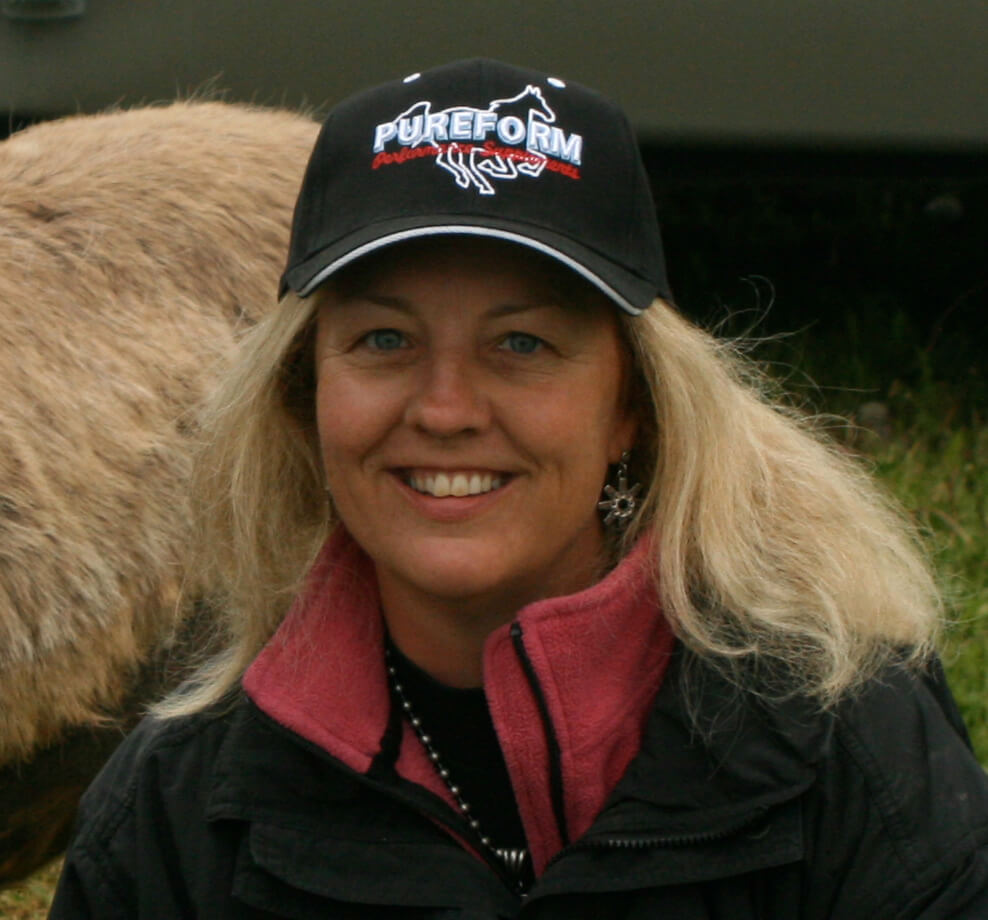
Owner/Publisher Karen’s lifelong love of horses began at a very early age when she wore out a couple of rocking horses before convincing her parents to get her the real thing. That ill-tempered bay gelding, Brandy, was a challenge for the young horsewoman, but it drove her ambition to become a horse trainer. After attending Canyonview Equestrian College’s Horsemanship Program, Karen realized she needed work that was a little more lucrative than training, so she took a job with Customs Brokerage to pay the bills. There, she discovered an affinity for computers and a talent for creating informative, entertaining newsletters. The Northwest Horse Source began as such a letter in December 1995, with a distribution of 1000 copies for its 12 black and white pages. Now 29 years later, it’s an online magazine and website with a reach of over 10,000 per month and growing! Not bad for the results of one woman’s dream to work with horses!
Today, Karen remains involved with every aspect of the magazine and treasures the community of thousands who share a common passion.

